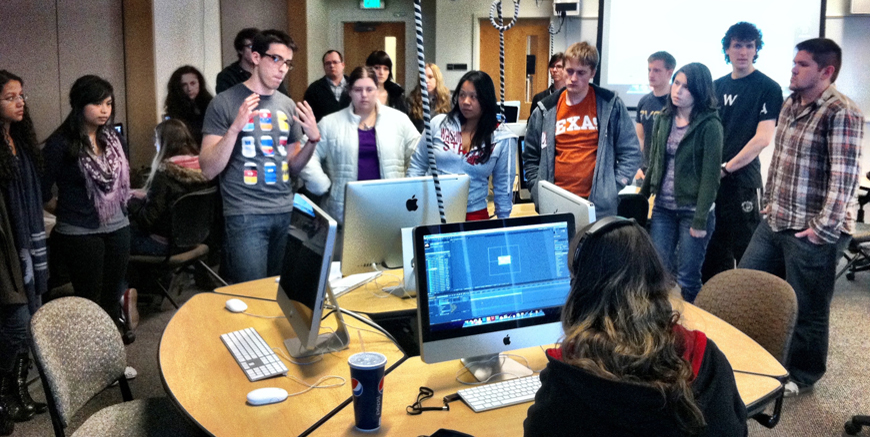The game engine, BGE, built into Blender was basically just killed off today. In this developer commit to the upcoming 2.8 source code ( https://developer.b.
- Free Blender 3D engine models for download, files in blend with low poly, animated, rigged, game, and VR options.
- Click on it, then choose 'Blender Game'. This is the Blender Game Engine. You can only use physics when you are in the BGE. On the right sidebar, find the bar with.
- Due to the way Blender's addon system works they will start off at the bottom of the area, but you can drag them higher with the grips in the top right corners. Source Engine Export. This panel contains scene options, export buttons, and utilities.
- Today we are checking out UPBGE, the spiritual successor to the Blender Game Engine. Started as a fork in 2015, with the removal of BGE from Blender in Blen.
Blender Engine Games
| Developer(s) | Blender Foundation |
|---|---|
| Stable release | 2.79 / 76.7 – 137.5 MiB (varies by operating system)[1] |
| Written in | C, C++, and Python |
| Operating system | Cross-platform |
| Type | 3D computer graphics |
| License | GPL-2.0-or-later |
| Website | upbge.org |
The Blender Game Engine is a discontinued component of Blender, a free and open-source 3D production suite, used for making real-time interactive content. The game engine was written from scratch in C++ as a mostly independent component, and includes support for features such as Python scripting and OpenAL 3D sound.
History[edit]
Erwin Coumans and Gino van den Bergen developed the Blender Game Engine in 2000. The goal was to create a marketable commercial product to easily create games and other interactive content, in an artist-friendly way. These games could run either as stand-alone applications, or embedded in a webpage using a special plugin that was eventually discontinued, as the inability to sandbox Python aroused security concerns, though there was a later effort to revive it (an updated alpha version for Internet Explorer, and Firefox and COLLADA support was considered). Another plugin has surfaced named Burster, which enables secure embedded gameplay on websites, with sandboxing and encryption support.
Blender Engineering Software
Key code in the physics library (SUMO) did not become open-source when the rest of Blender did, which prevented the game engine from functioning until version 2.37a.
Blender 2.41 showcased a version that was almost entirely devoted to the game engine; audio was supported.
Version 2.42 showed several significant new features, including integration of the Bullet rigid-body dynamics library.
A new system for integration of GLSL shaders and soft-body physics was added in the 2.48 release to help bring the game engine back in line with modern game engines. Like Blender, it uses OpenGL, a cross-platform graphics layer, to communicate with graphics hardware.
During the 2010 Google Summer of Code, the open-source navigation mesh construction and pathfinding libraries Recast and Detour were integrated; the work was merged to trunk in 2011. Audaspace was coded as well to provide a Python handle for sound control. This library uses OpenAL or SDL as a backend.
Features[edit]
The Blender Game Engine uses a system of graphical 'logic bricks' (a combination of 'sensors', 'controllers' and 'actuators') to control the movement and display of objects. The game engine can also be extended via a set of Python bindings.
- Graphical logic editor for defining interactive behavior without programming
- Collision detection and dynamics simulation now support Bullet Physics Library. Bullet is an open-source collision detection and rigid body dynamics library developed for PlayStation 3
- Shape types: Convex polyhedron, box, sphere, cone, cylinder, capsule, compound, and static triangle mesh with auto deactivation mode
- Discrete collision detection for rigid body simulation
- Support for in-game activation of dynamic constraints
- Full support for vehicle dynamics, including spring reactions, stiffness, damping, tire friction etc.
- Python scripting API for sophisticated control and AI, fully defined advanced game logic
- Support all OpenGL lighting modes, including transparencies, Animated and reflection-mapped textures
- Support for multimaterials, multitexture and texture blending modes, per-pixel lighting, dynamic lighting, mapping modes, GLSL Vertex Paint texture blending, toon shading, animated materials, support for normal and parallax mapping
- Playback of games and interactive 3D content without compiling or preprocessing
- Audio, using the SDL toolkit
- Multi-layering of Scenes for overlay interfaces.
Future roadmap[edit]

Ton Roosendaal has stated[2] that the future of the Blender Game Engine will integrate the system into Blender as an 'Interaction Mode' for game prototypes, architectural walkthroughs and scientific simulators. Blender developer Martijn Berger stated that 'The sequencer and game engine are in serious danger of removal, if we cannot come up with a good solution during the 2.8 project.'[3]
On the 16th of April 2018 Blender Game Engine was removed from Blender ahead of 2.8's launch.[4]
Blender is working to have a good support for external game engines like Godot, Armory3D and Blend4Web.[5]
UPBGE[edit]
UPBGE (Uchronia Project Blender Game Engine) is a fork of Blender created by Tristan Porteries and some friends in September 2015. It is an independent branch with the aim of cleaning up and improving the official Blender Game Engine code, experimenting with new features, and implementing forgotten features that currently exist but have not been merged with the official Blender trunk. UPBGE Blender builds can be downloaded from the upbge.org website. As of late 2017, the UPBGE team is integrating their code with the unreleased 2.8 version of Blender and the team's intention is to make use of the new real-time physically based renderer in Blender 2.8 which is called Eevee. There are ongoing discussions about the UPBGE code becoming part of a future official Blender release.
Gallery[edit]
Blender Game Engine 2.42 screenshot
Blender Game Engine 2.42 screenshot
Blender GLSL shader node editor 2.42 screenshot
Logic Bricks and Python Scripting
Notable games[edit]
- Fly In The House[6]

See also[edit]
- Bullet (software), Game Blender's Physics engine
- Blend4Web, Blender-based engine for online games
- Verge3D, Blender-based WebGL framework
References[edit]
- ^'Blender 2.79 Release Index'. Blender.org. 11 September 2017. Retrieved 12 September 2017.
- ^'Blender roadmap – 2.7, 2.8 and beyond'. Blender. Retrieved 1 March 2014.
- ^'2.8 project developer kickoff meeting notes'. Blender. Retrieved 12 November 2015.
- ^'rB159806140fd3'. developer.blender.org. Retrieved 18 April 2018.
- ^'[Bf-committers] Blender 2.8 - realtime and interactive 3d'.
- ^https://www.indiedb.com/games/fly-in-the-house
External links[edit]
| The Wikibook Blender 3D:_Noob to Pro has a page on the topic of: Game Engine Basics |
- Official website

With Blender 2.8+ the available engines used for live preview and offline rendering have been updated to include two new options that accompany Cycles, Eevee and Workbench, in favour of removing Blender Render and Blender Game (game engine), both now obsolete.
Render Engine
For Blender 2.8+ the engine enabled by default to display scene content is Eevee no matter the Viewport Shading mode. To use a different engine option, click the Render properties button and from the Render Engine drop-down menu at the top of the panel select Eevee, Workbench or Cycles. The 3D View will immediately update appropriately. Repeat to set a different engine.
Design note: both Eevee and Cycles are equally capable of providing real-time previews, however, Cycles is more resource hungry due its accuracy calculating and rendering object shading, shadows and transparency – in switching to Cycles additional options may become available depending on graphic card and/or system capabilities.
Looking at the same scene rendered live using Eevee (above top) and Cycles (above bottom), shadows, shading and lighting differ significantly, especially where they they might affect or be influenced by, transparent surfaces, layered transparency in particular. This accuracy comes at the much greater expense, Cycles being far more resource hungry.
Switching between engines used to render the contents of the 3D View and for external output is done in Render properties using the Render Engine option, here options to set Eevee (default), Workbench and Cycles are available.
Save Engine Default
Although Blender 2.8 uses the Eevee engine by default it is possible to set Workbench and/or Cycles instead. To do this, start Blender and make sure to be using the ‘factory’ *.blend file (userpref.blend), this loads in all the initial presets, settings and options, including a Camera, Cube and Lamp in the 3D View. In Render properties set the Render Engine as described above, e.g. Cycles, and then from the File menu click Defaults then Save Startup File – File » Defaults » Save Startup File. Next time Blender starts it should then default to the save configuration.
Design note: although a new configuration can be set and called into use by default, doing so can be overridden by settings saved in subsequently opened/loaded *.blend files (projects).
Saving a different Engine as the default, used whenever Blender starts – set the engine in Render Properties first then save the the file using Save Startup File.
